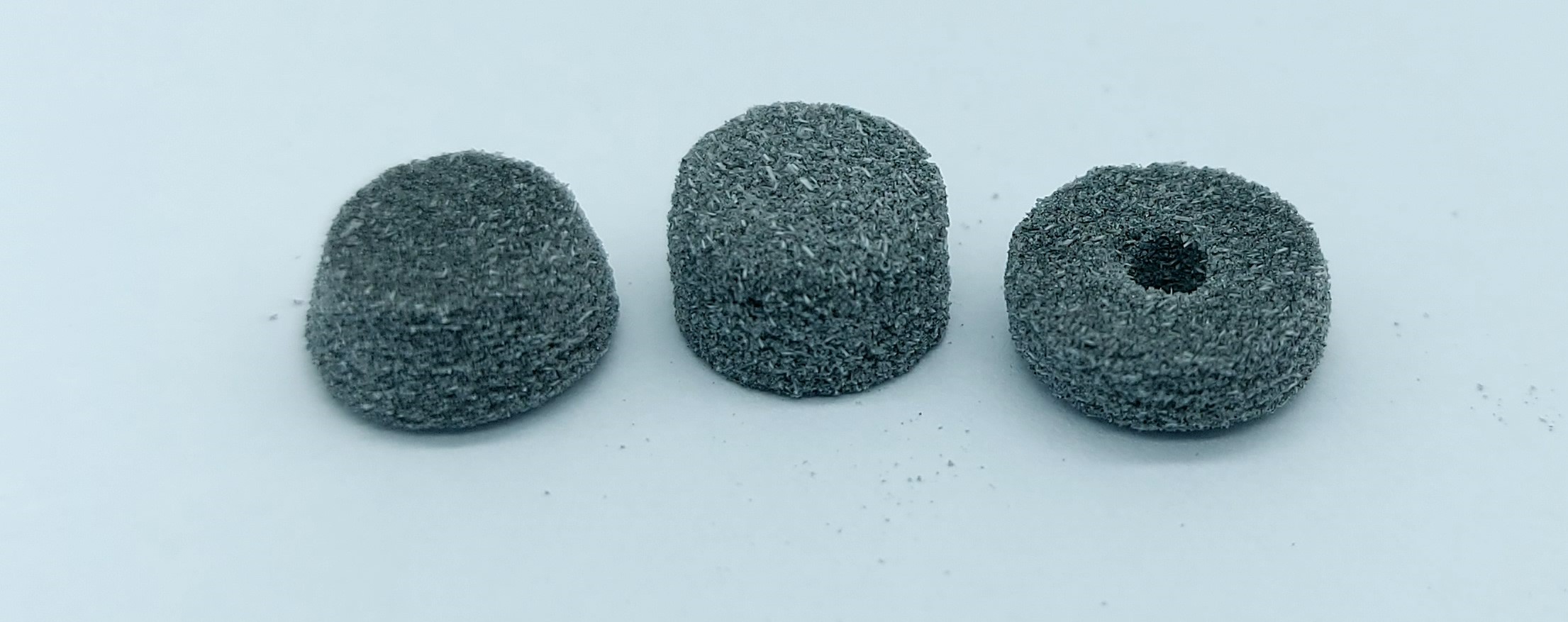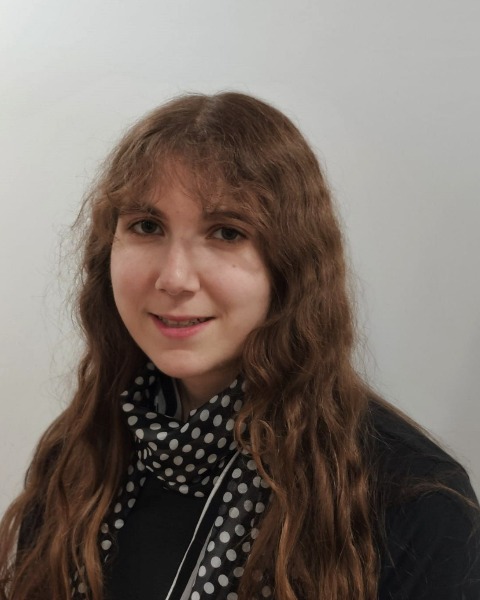Back
Purpose: There are many challenges in the pharmaceutical industry with modifications to oral dosage forms. This is especially apparent for certain demographics, including pediatric and geriatric patients. With regards to oral dosage forms for children, fixed-dose tablets designed for adults are used and require manual manipulation. This is often due to the lack of available premade dosages in the right strength. (Kader et al., 2021) For some groups, such as pediatric oncology patients, as many as 74% need manipulation of dosage forms. (Johannesson et al., 2022) The common practice for manipulation of oral dosage forms is to cut the tablets with a knife or pill cutter, which is of low accuracy and high patient and caregiver risk. A solution to this problem would be to create customizable additive manufactured oral dosage forms. Pharmaceutical tablets created with additive manufacturing technologies are developing in many print styles, including powder printing. While technologies like Fused Deposition Modelling (FDM) have come to a level of maturation for their own specific applications in pharmaceutical printing, Selective Laser Sintering (SLS) is still developing for pharmaceutical applications. This style of printing allows for a variable shape and an aesthetic similar to a traditionally pressed tablet. Many of the features of these printed tablets, however, are still unknown, as this technology is still rather new. The impact of the geometry of the tablets is one such area that is still not sufficiently explored, which is an essential analysis for the path to adoption of this technology for pharmaceutical application. Employing SLS technology, surface area and surface area to volume ratio impacts were analyzed to determine the effects of these variables.
Methods: For this study, theophylline was used as the API (active pharmaceutical ingredient), Kollidon VA 64 was used as the polymer, Aerosil was used as the excipient, and activated carbon was used as the colorant. The composition of the powder material used for printing was 10% API (theophylline), 88.5% polymer (Kollidon VA 64), 0.5% excipient (Aerosil), and 1% colorant (activated carbon). For the comparison of the impact of surface area on tablets, three different shapes were chosen as a comparison: a cylinder, a hollow cylinder, and a conical frustum. Dimensions of these shapes were chosen to have similar surface areas, so an impact comparison could be achieved. The basis for the surface area of the shapes was a cylinder with a height of 4 mm and a radius of 5 mm. For the comparison of surface area to volume, different size cylinders were printed, since this is the simplest shape, thus creating different surface area to volume ratios. Radii of 3 mm, 5 mm, and 7 mm were chosen for comparison (surface area to volume ratios of 1.17, 0.9, and 0.79, respectively), all with a height of 4 mm for the tablets. Fusion 360 modelling software was employed to design the tablets and a Sintratec Kit printer was used to print the tablets, all with the same print settings. After printing, characterization was done and differences between the tablets were investigated.
Results: On examination of the tablet masses, a consistency of the print quality can be observed, which is a promising result for the SLS print method, since all geometries were printed with the same settings. The geometries are consistent in that the average mass deviations are within the requirement for European Pharmacopoeia standards for tablets in their weight ranges. (2.9.5. Uniformity of Mass of Single-Dose Preparations, 2020) DSC analysis showed a partial crystallinity of the tablets, while dissolution data showed clear trends.
Conclusion: The geometries of tablets are important for the further development of SLS additive manufacturing technology for pharmaceutical application. Consideration into the shape, surface area, and volume are key for oral dosage forms created with this technology. An understanding of this may lead to better future application for select patient groups, such as the pediatric population.
References: European Pharmacopoeia (10th ed.). (2020). C.o. Europe.
Johannesson, J., Hansson, P., Bergström, C. A. S., & Paulsson, M. (2022). Manipulations and age-appropriateness of oral medications in pediatric oncology patients in Sweden: Need for personalized dosage forms. Biomedicine & Pharmacotherapy, 146, 112576. https://doi.org/10.1016/j.biopha.2021.112576
Kader, R., Liminga, G., Ljungman, G., & Paulsson, M. (2021). Manipulations of Oral Medications in Paediatric Neurology and Oncology Care at a Swedish University Hospital: Health Professionals’ Attitudes and Sources of Information. Pharmaceutics, 13(10). https://doi.org/10.3390/pharmaceutics13101676
Acknowledgements:Funding for this project is from the Erling-Persson Foundation.

Conical frustum, cylinder, and hollow cylinder geometries printed
.jpg)
Three shapes selected for printing; (1) cylinder, (2) hollow cylinder, (3) conical frustum
Discovery and Basic Research - Pharmaceutics
Category: Poster Abstract
(M1330-05-27) Geometry Study of Theophylline-Containing SLS Printed Pharmaceutical Tablets
Monday, October 17, 2022
1:30 PM – 2:30 PM ET

Valerie R. Levine, MS
PhD Student
Uppsala University
Uppsala, Uppsala Lan, Sweden
Valerie R. Levine, MS
PhD Student
Uppsala University
Uppsala, Uppsala Lan, Sweden
Presenting Author(s)
Main Author(s)
Purpose: There are many challenges in the pharmaceutical industry with modifications to oral dosage forms. This is especially apparent for certain demographics, including pediatric and geriatric patients. With regards to oral dosage forms for children, fixed-dose tablets designed for adults are used and require manual manipulation. This is often due to the lack of available premade dosages in the right strength. (Kader et al., 2021) For some groups, such as pediatric oncology patients, as many as 74% need manipulation of dosage forms. (Johannesson et al., 2022) The common practice for manipulation of oral dosage forms is to cut the tablets with a knife or pill cutter, which is of low accuracy and high patient and caregiver risk. A solution to this problem would be to create customizable additive manufactured oral dosage forms. Pharmaceutical tablets created with additive manufacturing technologies are developing in many print styles, including powder printing. While technologies like Fused Deposition Modelling (FDM) have come to a level of maturation for their own specific applications in pharmaceutical printing, Selective Laser Sintering (SLS) is still developing for pharmaceutical applications. This style of printing allows for a variable shape and an aesthetic similar to a traditionally pressed tablet. Many of the features of these printed tablets, however, are still unknown, as this technology is still rather new. The impact of the geometry of the tablets is one such area that is still not sufficiently explored, which is an essential analysis for the path to adoption of this technology for pharmaceutical application. Employing SLS technology, surface area and surface area to volume ratio impacts were analyzed to determine the effects of these variables.
Methods: For this study, theophylline was used as the API (active pharmaceutical ingredient), Kollidon VA 64 was used as the polymer, Aerosil was used as the excipient, and activated carbon was used as the colorant. The composition of the powder material used for printing was 10% API (theophylline), 88.5% polymer (Kollidon VA 64), 0.5% excipient (Aerosil), and 1% colorant (activated carbon). For the comparison of the impact of surface area on tablets, three different shapes were chosen as a comparison: a cylinder, a hollow cylinder, and a conical frustum. Dimensions of these shapes were chosen to have similar surface areas, so an impact comparison could be achieved. The basis for the surface area of the shapes was a cylinder with a height of 4 mm and a radius of 5 mm. For the comparison of surface area to volume, different size cylinders were printed, since this is the simplest shape, thus creating different surface area to volume ratios. Radii of 3 mm, 5 mm, and 7 mm were chosen for comparison (surface area to volume ratios of 1.17, 0.9, and 0.79, respectively), all with a height of 4 mm for the tablets. Fusion 360 modelling software was employed to design the tablets and a Sintratec Kit printer was used to print the tablets, all with the same print settings. After printing, characterization was done and differences between the tablets were investigated.
Results: On examination of the tablet masses, a consistency of the print quality can be observed, which is a promising result for the SLS print method, since all geometries were printed with the same settings. The geometries are consistent in that the average mass deviations are within the requirement for European Pharmacopoeia standards for tablets in their weight ranges. (2.9.5. Uniformity of Mass of Single-Dose Preparations, 2020) DSC analysis showed a partial crystallinity of the tablets, while dissolution data showed clear trends.
Conclusion: The geometries of tablets are important for the further development of SLS additive manufacturing technology for pharmaceutical application. Consideration into the shape, surface area, and volume are key for oral dosage forms created with this technology. An understanding of this may lead to better future application for select patient groups, such as the pediatric population.
References: European Pharmacopoeia (10th ed.). (2020). C.o. Europe.
Johannesson, J., Hansson, P., Bergström, C. A. S., & Paulsson, M. (2022). Manipulations and age-appropriateness of oral medications in pediatric oncology patients in Sweden: Need for personalized dosage forms. Biomedicine & Pharmacotherapy, 146, 112576. https://doi.org/10.1016/j.biopha.2021.112576
Kader, R., Liminga, G., Ljungman, G., & Paulsson, M. (2021). Manipulations of Oral Medications in Paediatric Neurology and Oncology Care at a Swedish University Hospital: Health Professionals’ Attitudes and Sources of Information. Pharmaceutics, 13(10). https://doi.org/10.3390/pharmaceutics13101676
Acknowledgements:Funding for this project is from the Erling-Persson Foundation.

Conical frustum, cylinder, and hollow cylinder geometries printed
.jpg)
Three shapes selected for printing; (1) cylinder, (2) hollow cylinder, (3) conical frustum
